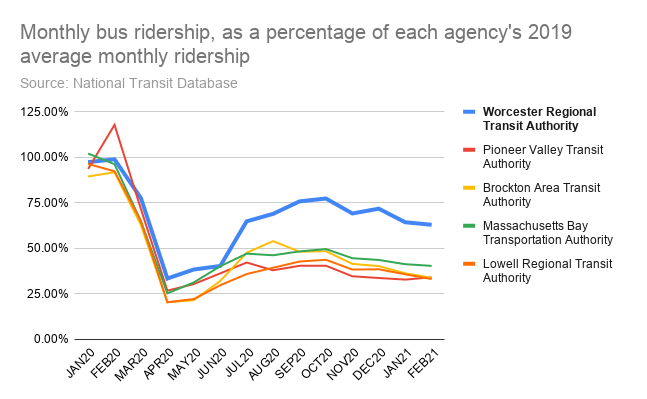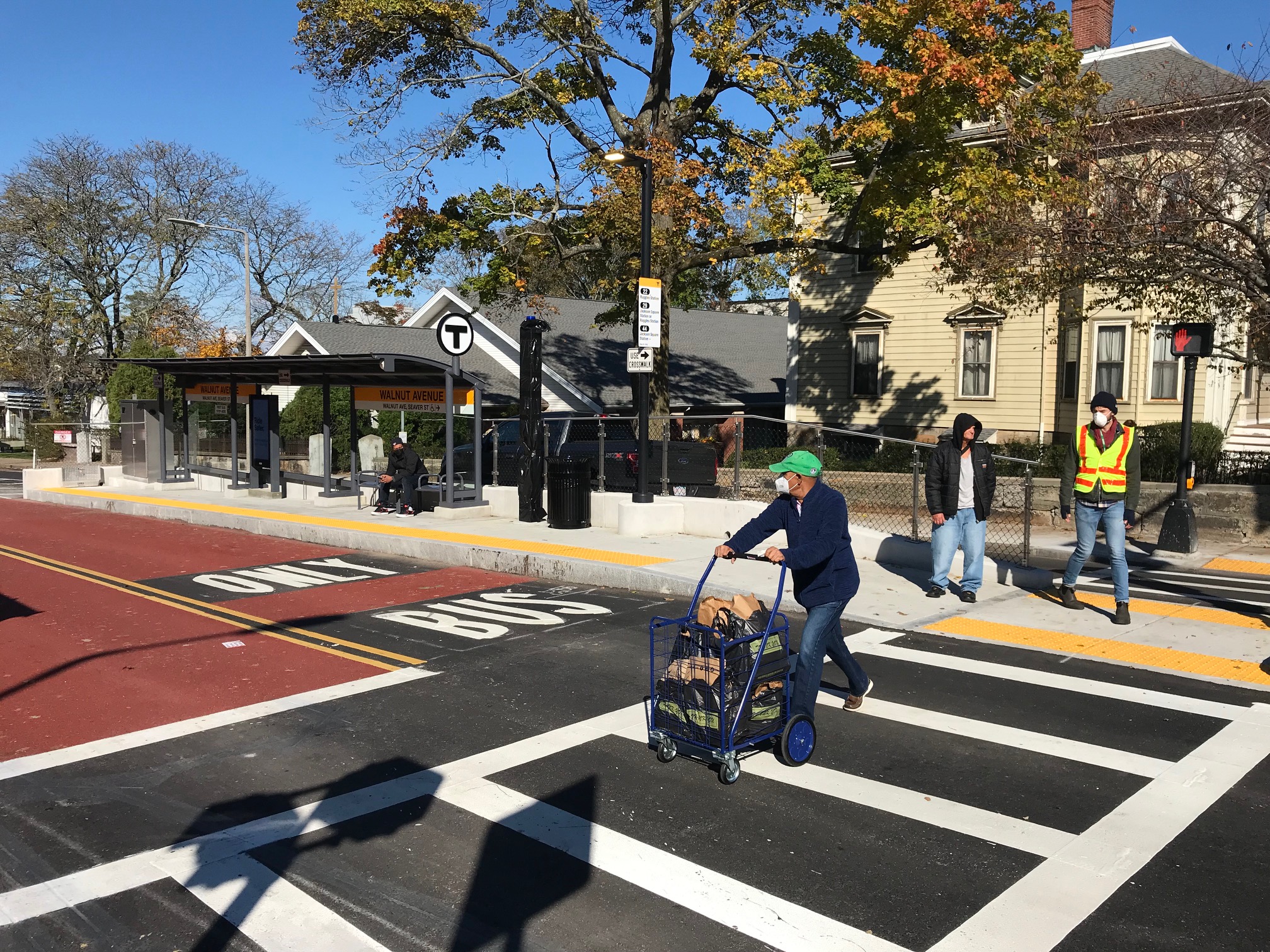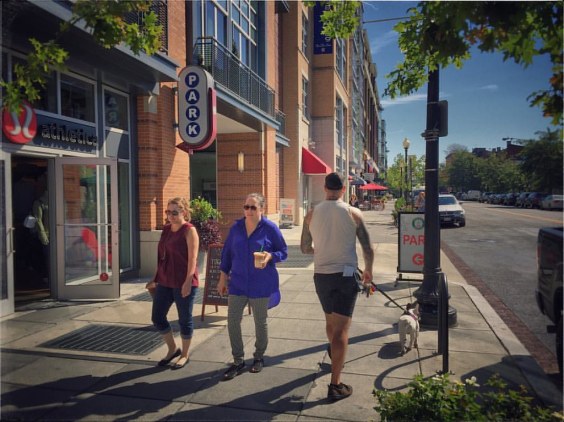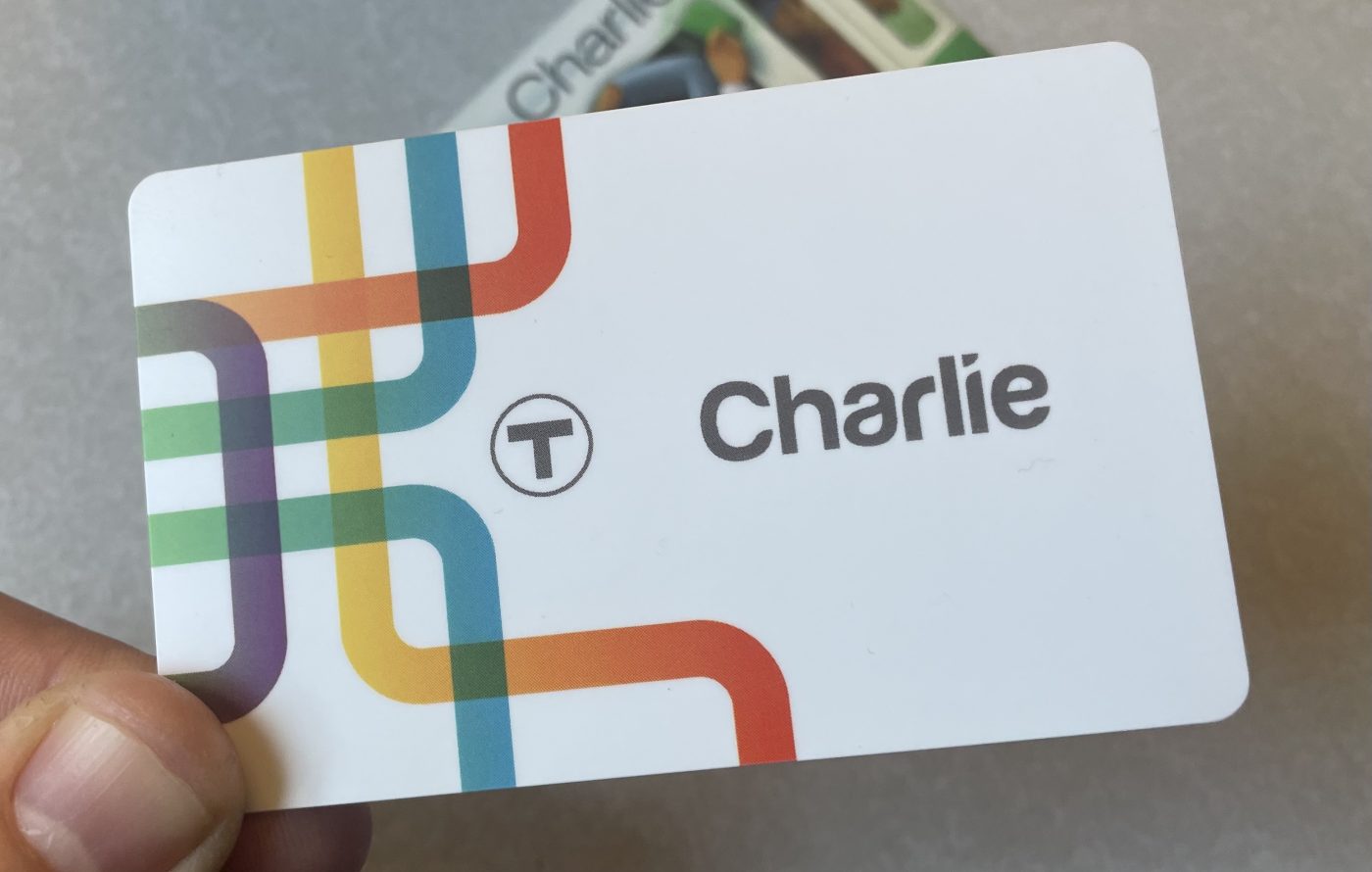One of the unique benefits of editing StreetsblogMASS is that I'm frequently able to meet and write about leaders who care deeply about the Commonwealth's communities and their future, and are working, often successfully, to make them better.
As 2021 draws to a close with yet another frightening surge in Covid-19 cases, it can feel a bit like we're right back where we were a year ago, in the same fog of anxieties over our health, our country, and our planet.
But a lot of the stories we covered in the past year reminded me, as I compiled this year-end roundup, that we still have lots of reasons for optimism.
These are some of the most important stories we covered in 2021:

Fare-Free Buses Catch On
Over the past year, Massachusetts cities and transit agencies – particularly Worcester's WRTA – have emerged as leaders in a nationwide movement towards fare-free transit services.
In 2020, transit agencies all over the country suspended fare collection to avoid contact between passengers and drivers. But thanks to local advocacy, the WRTA kept its fare-free policy in place even as lockdowns lifted in July and August of 2020.
In May, we analyzed the FTA's monthly transit ridership database and discovered that the WRTA had retained more ridership relative to peer agencies that had resumed collecting fares in the summer of 2020:

When we published that story, the WRTA's advisory board had already approved a budget for the upcoming fiscal year that would have resumed fare collection on July 1. But two weeks later, the WRTA board reversed that decision, and voted to use pandemic relief funds to extend the fare-free policy through the end of the year (the board has since extended it again, through the end of 2022):
Meanwhile in Boston, Mayor Janey struck a deal with the MBTA to make Route 28 buses free for a three-month pilot period (which has also since been extended). We took a ride on the 28 in October:
Free buses later emerged as a hot topic this fall during the Boston mayoral campaign. When City Councilor Essaibi-George tried to portray free buses as impractical, her opponent responded with a StreetsblogMASS news clip:
Making @MBTA bus service free wouldn’t just help riders. All door boarding would speed up routes & cut costs—$29M annually! #FreetheT pic.twitter.com/4DZcZyuiVa
— Michelle Wu 吳弭 (@wutrain) October 26, 2021
Wu won the election decisively and proposed an expansion of the fare-free pilot on her first day in office; in December, the Merrimack Valley Regional Transit Authority (MVRTA), which serves Haverhill, Lawrence, and surrounding communities, also voted to suspend fares on its local buses starting in March.
StreetsblogMASS Unearths DCR's Parkways Study
One of our most time-consuming stories this year was about the Department of Conservation and Recreation's "Parkways Study."
The Department of Conservation and Recreation (DCR) is a parks agency, but in the mid-20th century, its predecessors seized a lot of the Boston region's parklands – places like the Charles River waterfront, beaches in Revere, Lynn, and Quincy, and the Emerald Necklace parks – to build highways.
In 2015, DCR promised that they were going to make these roads safer and more accessible by setting aside $500,000 for a major "parkways study." The agency and its consultants hosted one public meeting for that study in the fall of 2015, but there were no records of any follow-up meetings, and I couldn't find anyone who could tell me what had happened to the project.
StreetsblogMASS filed a public records request for the study and related email messages. A DCR official was initially helpful, but soon stopped responding to calls and emails. We kept calling and leaving messages for 8 weeks after DCR missed its deadline to fulfill the public records request, and then we published this story:
One month after we published this, and six years after the original study was initiated, DCR finally released its "Parkways Master Plan," and announced the creation of a new “office of Green Transportation” to implement the plan’s recommendations. There's a lot of work to do, but a few of the plan's recommended projects – including a major road diet on the Hammond Pond Parkway in Newton – are already getting underway.
Watchdog Reporting on Gov. Baker's Climate Policies
At the end of 2020, the Baker administration released a new “2050 Decarbonization Roadmap” report, a long-term plan to virtually eliminate fossil fuel use within the next 30 years.
But a supporting technical report on the transportation sector – the state's biggest source of climate pollution – focused most of its recommendations on subsidizing electric car purchases, and generally dismissed the potential of reducing pollution by making it easier for people to travel without cars.
In February, we dug deeper into that recommendation by analyzing the Commonwealth's existing electric car subsidy programs, and found overwhelming evidence that the program is a huge giveaway to wealthy suburban households:
Worse, the program's $54 million budget has barely made a dent in the overall composition of the state’s vehicle fleet: electric cars still represent only one-half of one percent of the 3.1 million passenger vehicles registered in Massachusetts.
The Inequitable Toll of Dangerous Roads
Unfortunately, 2021 was also another brutal year for traffic crashes: according to early estimates from the USDOT, 18 percent more people died on U.S. roads in the first six months of 2021 compared to the same period last year — a death toll that represents roughly 20,160 lives lost.
In January, StreetsblogMASS hosted a virtual book discussion with former StreetsblogUSA editor Angie Schmitt about her new book, “Right of Way: Race, Class, and the Silent Epidemic of Pedestrian Deaths in America.”
One of the book's key arguments is that our roadway networks are lethally racist. Schmitt quotes transportation consultant Tamika Butler: “When you take data of race and socio-economic status and overlay it with where there are the most traffic incidents, and the most traffic deaths and serious injuries, communities of color and low-income communities light up those maps.”
We took Butler's suggestion and confirmed that that pattern holds up in Massachusetts, particularly in communities like Brockton and Springfield:
The victims of these crashes aren’t merely dots on a map. They include people like Antonio Tavares, a 61 year-old Cape Verdean immigrant who died when a police officer struck him with his cruiser on Brockton’s Main Street in August 2019.
Or Brenda Lee Keller, 57, who was known for sharing food from her own refrigerator with neighbors in need until a hit-and-run driver killed her near her home in Mattapan in May 2019.
Another reader of Schmitt's book was former MassDOT Secretary Stephanie Pollack, who now leads the Federal Highway Administration in Washington. In October, her agency acknowledged that "Black and Indigenous people and people walking in low-income communities continue to be disproportionately represented in pedestrian fatal crashes."
Later that same month, Pollack and USDOT Secretary Pete Buttigieg promised a new "National Roadway Safety Strategy," to be revealed in 2022. In a press release, Pollack promised that her agency would be committed “to working closely with local and state transportation agencies to make every road that is designed or built with federal funds safe for everyone who uses it."
In March, we also wrote about MassDOT's new "controlling criteria," which were adopted at the end of Pollack's tenure at MassDOT. The new rules outline minimum standards to ensure that safe sidewalks and bike facilities are included in state roadway construction projects:
The Somerville Alliance for Safe Streets
In April, a hit-and-run driver struck and killed Marshall Mac, a 72-year-old Vietnam War veteran, on McGrath Highway near Foss Park in Somerville.
A month later, we reported the news that state highway officials were "fast-tracking a $37 million project to repair the Interstate 93 viaduct ahead of a modest $6 million safety project for nearby surface roadways," like the one where Marshall Mac died.
The proposed highway project outraged neighbors, who formed a new grassroots group, the Somerville Alliance for Safe Streets, began referring to the area as the "Corridor of Death," and quickly organized a rally to demand safety improvements with the state's legislative delegation and Rep. Ayanna Pressley.
A few weeks later, MassDOT acknowledged those concerns, and promised to start work on a number of safety upgrades in the area before it begins its viaduct repair project. However, as 2021 draws to a close, many of those promises remain unfulfilled.
Safer Streets; Better Bike Lanes; Faster, More Reliable Transit
StreetsblogMASS also kept track of dozens of infrastructure projects in the past year, and told the stories of how persistent advocacy made these projects better:
- In late October, Boston-area safe streets and transit advocacy organizations organized a petition to ask MassDOT to reconfigure the Mass. Ave. Bridge; just one month later, the state put out construction cones and signs to channel vehicles into a single lane and give extra space for the bridge's busy bike lanes.
- Boston opened its new Columbus Avenue bus lanes – the region's first center-running bus lanes – and secured funding to extend the new bus lanes northward to the Ruggles Orange Line station.
- Bikesharing systems expanded into Salem and West Springfield, and the Boston region's Bluebikes system celebrated its 10th anniversary by smashing its pre-pandemic daily ridership records.
- After advocates from Somerville Bike Safety petitioned the city to prioritize better bike and pedestrian infrastructure over on-street parking on Highland Avenue, a major crosstown route for bikes and buses, the City Council voted unanimously to request a new design that includes protected bike lanes in an upcoming reconstruction project.
- This summer, MassDOT wrapped up construction on a new bridge between Agawam and West Springfield that includes new sidewalks and a network of protected bike paths for Agawam's riverfront commercial district. An upcoming project will extend the high-quality bike and pedestrian infrastructure further eastward through West Springfield to the banks of the Connecticut River.
- After some wavering, the Town of Arlington endorsed a plan to install traffic-calming measures and new bike lanes on Massachusetts Avenue near Appleton Street, where a driver killed Somerville resident Charlie Proctor in 2020. The town implemented the project this fall:
Welcome to Arlington’s first physically separated bike lane ! pic.twitter.com/MMtOktdvsK
— Petru Sofio 🚄🚦🚲 (@PetruSofio) December 17, 2021
Stories We're Still Watching
In May, another StreetsblogMASS public records request revealed how politically well-connected business owners on Beacon Hill stymied a City of Boston plan to install a protected bike lane on Charles Street, a crucial connection in the regional bike network:
Since we published this story, the Boston Cyclists Union has convened a grassroots Charles Street campaign, and city officials released plans to upgrade the existing Charles Street bikeway south of Beacon Street to accommodate two-way bike traffic. Advocates are hoping that the new administration in City Hall will find a way to make this connection.
Travel Guides for New Trails
This summer, we decided to branch into travel reporting with a series of guides to some of the new car-free paths that are opening up all over the Commonwealth.
These features were surprisingly popular, and we hope they've helped more people discover and enjoy these new trails:
A Growing Audience, and Our Plans for 2022
All this reporting has also helped us reach new audiences across the state. Our website statistics suggest that we're getting roughly four times as many site visitors as we did when we first launched the site in the summer of 2019; we're also seeing more of our reporting referenced by other reporters in bigger news organizations.
We owe much of our success so far to our readers, who share our reporting by word of mouth and on social media. Thank you for reading StreetsblogMASS.
In 2022, we aim to continue all this work, but we're also fundraising to increase our budget to hire new writers. If you appreciate the news you read from StreetsblogMASS, please consider a year-end gift to support our nonprofit organization and help us meet our goals to do even more in 2022.






